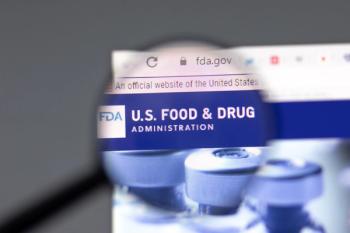
Three Steps to A Successful Combination Product Trial
Sponsors can streamline the design and execution of their clinical trials by following this three-step approach.
Combination products-medical products composed of some combination of a medical device, drug, or biologic-enhance or reveal new capabilities of their parts. A sponsor, for example, could enhance the stent it developed to prevent a coronary artery from collapsing after an angioplasty by combining it with a drug that prevents scar tissue from forming.
By 2019, the combination product market is anticipated to achieve a compound annual growth rate of
These products are more complex than their individual components, and therefore undergo a more complicated regulatory journey governed by multiple sets of regulations. The regulations applied to a particular combination product depends on its elements and its primary mode of action, and this can make it challenging for regulatory authorities, who must agree on the product designation to define a lead review center. Moreover, across the globe, such classifications are subject to different interpretations. Therefore, it is not surprising that, as the FDA readily states, combination products raise complex regulatory, policy, and review management issues.
These regulatory challenges may appear daunting to sponsors of combination product trials. However, sponsors can streamline the design and execution of their clinical trials by following our three-step approach. We designed this approach to efficiently emphasize the benefits and demonstrate the safety of a sponsor’s combination product and thereby maximize the probability of success with the FDA. It works best for products that combine a drug or biologic with a delivery device because of the potentially major differences in the added agent’s human bioavailability (BA) and bioequivalence (BE) that result from the new delivery method.
The three steps for sponsors are to 1) execute a small feasibility study to outline the product’s pharmacological effects and validate its performance; 2) run a pilot study in a slightly larger sample, and 3) perform a larger pivotal study to show the product’s long-term effects. Let’s take a closer examination of these steps:
Step One: Collect Bioavailability and Bioequivalence Data
A new delivery device may affect a drug or biologic’s BA or BE, which may in turn affect the drug’s safety or efficacy. Manufacturers must demonstrate that, despite changes in the delivery method, their drug or biologic is still safe and effective.
To accomplish this, manufacturers should execute a randomized, placebo-controlled study that uses comparative clinical endpoints in patients. If it’s not possible for a sponsor to perform a double-blind study, the FDA will still accept an unblinded design, as long as all trial evaluations occur in a central, blinded core facility.
In these studies, patients should be randomized to three groups in a 2:2:1 ratio. An equal number of patients should receive the combination product or the drug alone, and then half that number of patients should receive the device alone. This study should include as many patients as needed to demonstrate bioequivalence of the drug and the combination product.
For a combination product to show bioequivalence to a predicate product, both the drug or biologic and the combination product should demonstrate superiority to the device alone. To avoid ethical issues associated withholding treatment from the device-only group, the FDA allows sponsors to move those patients to an active treatment arm if they do not show recovery after a specified amount of time.
Step Two: Run a Small Pilot Study
After bioequivalence is established, manufacturers must demonstrate their product’s safety and efficacy. For this step, they should run a prospective, partially blinded, controlled study that compares their combination product’s safety and efficacy with those of predicate products or the standard of care. This study should include two arms: one group that receives the combination product, another that receives a previously cleared treatment. This study will require about 50-60 patients in total to demonstrate the combination product’s safety and efficacy and to determine the inclusion and exclusion criteria for the upcoming, larger pivotal study.
Step Three: Execute a Large Pivotal Study
Finally, sponsors must demonstrate a combination product’s safety and efficacy in a larger population over a longer duration. When determining the size of a pivotal study, a sponsor should consider its combination product’s primary mode of action, intended use, adverse effects and frequency, as well as its efficacy as compared with the standard of care.
For pivotal studies, the FDA usually only requires a non-inferiority trial, wherein the product shows “substantial equivalence” to the standard of care. To demonstrate equivalence, a sponsor should run a double-blind, two-arm study, wherein one arm receives the combination product and the other arm receives the standard of care. These studies tend to use fewer subjects.
To show superiority, on the other hand, a sponsor must show a substantial difference between their product and the standard of care, which requires a larger sample. The Centers for Medicare & Medicaid Services (CMS), in fact, often require sponsors to demonstrate that their combination product (a) is superior to the standard of care regarding safety or efficacy or both, and (b) reduces the overall cost of care.
Superiority trials are typically more expensive than non-inferiority trials, not only because they require more patients, but also because they involve the collection of more data to compare costs. They also typically run for a longer period to show the long-term effectiveness, safety, or both, of the combination product.
Many sponsors may choose to seek regulatory clearance from the FDA, the European Union (EU), or both before they use patient registries to obtain the long-term effectiveness data required for CMS. In this case, it is important that sponsors receive coordinated CMS and FDA approval for their combination products.
If a sponsor chooses to run its pivotal trial outside of the US, it must ensure that its trials conform to FDA and international standards (e.g., ISO 14155). While the FDA will accept some data collected in the EU or other regulatory jurisdictions as part of an evidence package for approval, the sponsor must be certain that patient management in trials outside the US is nearly identical to clinical practice in the US for the specific indication the product is designed to treat.
Cynthia Pritchard, PhD, is Senior Director, Strategic Regulatory Affairs with
Newsletter
Stay current in clinical research with Applied Clinical Trials, providing expert insights, regulatory updates, and practical strategies for successful clinical trial design and execution.






.png)



.png)



.png)
.png)
